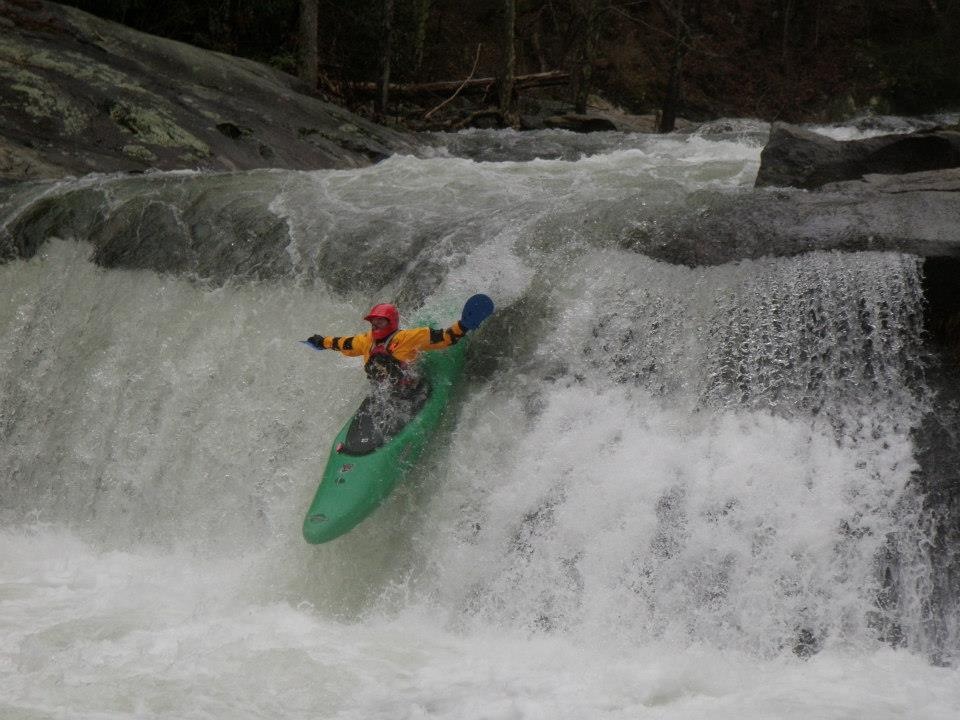- Home
- Patient Stories
- Lara Christy - Frozen Shoulder
Frozen Shoulder - Lara Christy
 Lara Christy is living her dream life. A nurse practitioner now living in North Carolina, Christy spends much of her free time kayaking the rivers that crisscross throughout her state. For her, whitewater kayaking is not so much a hobby; it’s a passion.
Lara Christy is living her dream life. A nurse practitioner now living in North Carolina, Christy spends much of her free time kayaking the rivers that crisscross throughout her state. For her, whitewater kayaking is not so much a hobby; it’s a passion.
“Within an hour and a half of my home, there are a half a dozen Class 3 and 4 rivers to kayak,” says Christy. “I moved here completely for the water and kayaking available.”
Christy’s dream almost didn’t happen. While living in St. Louis and working as an ICU nurse at a local hospital, she slipped and fell while outside walking her dog. The fall resulted in a dislocated shoulder. Over time, the inability to move her shoulder while it was healing atrophied her muscles and created adhesive capsulitis, or “frozen shoulder,” a condition in which the shoulder becomes stiff and painful to move.
“I couldn’t lift patients, I couldn’t reach my hand behind my back or raise it to braid my hair,” says Christy. “It was a career-ending problem.”
Christy had to switch jobs away from direct patient care to sitting behind a desk as a case manager. She also couldn’t enjoy many leisure activities, including kayaking, a recreational sport she picked up in the 1990s.
Adhesive capsulitis can occur after an injury or as a complication of diseases such as hypothyroidism, hyperthyroidism, Parkinson’s disease, and diabetes. It can immobilize the shoulder for weeks or even months.
“Her range of motion was 45 degrees for both external and internal rotation,” says Christy’s doctor, sports medicine specialist Matthew Matava, MD, professor of orthopedic surgery and physical therapy at Washington University School of Medicine. “Both should be at least 90 degrees.”
Patients with frozen shoulder typically start with non-surgical treatment options, such as over-the-counter anti-inflammatory medications (aspirin and ibuprofen) or steroid injections. Physical therapy is often prescribed to build strength and restore range of motion. When those options don’t relieve the pain, surgery is recommended.
Christy underwent physical therapy three times a week for three months before she agreed to have arthroscopic surgery.
“We did surgery to release the scar tissue that had formed in her shoulder capsule and was restricting her motion,” explains Matava. “She also underwent a gentle manipulation of her shoulder to release further scar tissue and to assess the final range of motion that was achieved.”
For Christy, the procedure provided almost immediate relief. “My range of motion was instantly better,” she says. “The pain was still there, but I went back to physical therapy to strengthen the shoulder and maintain that range of motion.”
Matava sent Christy to STAR: Sports Therapy and Rehabilitation at Barnes-Jewish West County Hospital. The STAR Center provides one-on-one instruction by physical therapists and customizes rehabilitation programs to address both the injury and the goals of each patient. It has special expertise and equipment to treat recreational and professional athletes as well as those who have work-related injuries or suffer from a wide variety of orthopedic pain.
"Our physical therapists developed an individualized program for Lara including home exercises for strengthening, stabilization and range of motion maintenance, isokinetic strength testing and strengthening, as well as customized return to sport activities,” says Matthew Green, manager of rehabilitation services at STAR. “She worked hard and thus had very successful results. In addition, Lara took advantage of our therapeutic massage service to help facilitate soft tissue and scar tissue mobility. This also proved very beneficial in her situation."
“They understood and fought the fight with me,” says Christy. “They knew, and I knew, that my mobility would come back only through hard work and lots of therapy.”
Christy spent almost a year in rehabilitation following surgery. As she recovered and got stronger, Christy made the leap and decided to move to a location that had multiple close opportunities for kayaking. She chose North Carolina, becoming a nurse practitioner for the Veterans Administration and providing home-based primary care to veterans in rural parts of the state.
Today she traverses Class 4 rivers on a regular basis. Her only accommodation to her shoulder injury — a switch from stick paddles to hand paddles. “There is less torque on the shoulder joint and it’s a great way to maintain my strength in my arms, back and shoulders,” she says.
She still lifts weights and continues to follow a shoulder strengthening routine to minimize the chance of re-injury.
“I knew as soon as I came over to Dr. Matava’s team that he was going to get me the best possible result,” Christy says. “I thought I would never kayak again and I certainly never thought I’d get back to the sport on this level.
“It feels so great to be rolling in the water again!”
More Info: